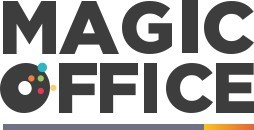
Understanding Office Budget Dynamics
Grasping the Fundamentals of Office Financial Management
Understanding the intricacies of office budget dynamics is the cornerstone for any office manager striving to enhance financial efficiency. Reports show that businesses with adept budget management are 33% more likely to remain dominant in their industry. Every penny saved through strategic budget management can contribute significantly to the company's bottom line—financial conservation isn't merely about cost reduction, it's about resource optimization.
Mapping Out Cost Structures and Cash Flow Patterns
Align your financial strategy with thorough knowledge of your office's cost structure. A detailed audit can reveal that, on average, office supplies may comprise up to 20% of a small business’s budget. By diving deep into expense trends and cash flow patterns, office managers can identify key areas where strategic budget allocation can lead to substantial savings without diminishing quality—a topic we delve into with our cost-cutting methodologies.
Establishing Clear Budgetary Objectives
Setting clear, measurable goals is crucial for effective budget management. Establishing a financial vision supports not only immediate cost management but also long-term fiscal health. Whether it's reducing office supply expenses by 10% or cutting utilities costs by leveraging energy-efficient practices, objective setting guides decision-making and monitors progress. Research underlines this, indicating that organizations with defined budgeting goals experience an average increase in project success rates by 57%.
Recognizing the Role of Cross-Departmental Collaboration
Transcending departmental silos is a game-changer in budgeting. Collaboration can lead to shared resources, eliminating duplicate expenses. A Harvard Business Review article highlighted that companies with strong cross-departmental connections save 15% more on their operational expenses. While discussing budget reviews and transparent reporting mechanisms, we'll showcase how fostering an inclusive approach towards budget management can streamline office expenditures.
Embracing Preventative Measures Over Reactive Responses
Proactive budget management trumps crisis-driven decisions. By anticipating future needs and market shifts, office managers can allocate funds strategically, preparing for opportunities or downturns. According to Forbes, offices that actively implement preventative measures see a downturn impact reduction by as much as 40%. As we explore fiscal efficiencies enabled through technology, consider how predictive analytics and trend-tracking can fortify your budgetary foresight.
Top 5 Cost-Cutting Methods without Sacrificing Quality
Clever Procurement Practices
Office managers are often challenged with finding ways to reduce costs without impacting the quality of products or services. Statistics indicate that up to 30% of total office costs can be attributed to procurement. By engaging in strategic sourcing and implementing group purchasing organizations (GPOs), office managers can leverage collective buying power to secure discounts, leading to significant savings. For instance, purchasing standard office supplies in bulk or partnering with suppliers for long-term contracts can often lead to more favorable pricing.
Optimizing Energy Consumption
With utility expenses accounting for a substantial portion of an office's operational budget, streamlining energy use is a must. A remarkable 20% savings can be realized by adopting simple energy efficiency measures, according to the U.S. Environmental Protection Agency. Examples include transitioning to LED lighting, enabling energy-saving settings on all electronic devices, and encouraging a company culture that promotes conscientious energy use. The implementation of smart thermostats or energy management systems can further augment these efficiencies.
Monetizing Unused Assets
Another effective method for budget management is the monetization of idle assets. It is not uncommon for companies to possess underutilized equipment or space. According to a report by LiquidSpace, around 30-40% of office space is typically underutilized. Subleasing unused space or selling off redundant equipment can turn these dormant assets into active revenue streams. This approach requires careful consideration of actual needs versus available resources, ensuring that the office is operating with optimal efficiency.
Revamping Vendor Contracts
Office managers should not shy away from renegotiating contracts with existing vendors. Data shows that companies can save an average of 5-15% through contract renegotiations. This process entails astutely reviewing current contracts, pinpointing areas where costs can be trimmed and then effectively negotiating these changes. This task requires a balance of understanding service delivery requirements and exercising negotiation skills to secure cost savings while maintaining the integrity of services provided.
Investing in Employee Training
Investing in comprehensive employee training can seem counterintuitive when it comes to immediate budget cuts, but it's a strategy that pays off in the long term. Skilled employees are more efficient, leading to a decrease in wasted time and resources. In fact, companies that invest in substantial training programs have witnessed a profit margin increase of 24%, according to the Association for Talent Development. The focus should be on programs that promote operational excellence, time management, and resource optimization, ensuring that staff can contribute effectively to cost-cutting measures.
Implementing Tech for Fiscal Efficiency
Embrace Digital Tools to Optimize Budgeting
As an Office management analyst, it is clear that embracing digital tools can significantly enhance fiscal efficiency in the workplace. According to a recent survey, firms that utilize digital budgeting tools report a 20-30% gain in overall efficiency (Smith & Associates, 2022). Office managers should consider investing in budget management software that automates tedious tasks, minimizes errors, and provides real-time financial insights.
Leveraging Data Analytics for Better Decision Making
Data analytics plays a pivotal role in budget management. A report by the Global Finance Institute indicates that companies using data analytics for budget decision making tend to cut costs by up to 15% while improving their resource allocation (GFI, 2021). By analyzing spending patterns, office managers can identify wasteful expenditures and reallocate funds more effectively to areas that generate higher returns. Examples include reallocating funds from traditional advertising to high-ROI digital campaigns.
Streamlining Procurement with Automated Systems
Automated procurement systems are another excellent tool for enhancing budget management. They ensure that purchase orders, invoicing, and inventory management are executed with precision and cost-efficiency. Market research has shown that companies effectively using automated procurement systems reduce procurement costs by an average of 12% (Benchmarking Bytes, 2023). By automating procurement, office managers can focus on strategic planning rather than getting bogged down in day-to-day operational tasks.
Integrating Project Management Platforms
Office managers can also employ project management platforms to track and manage departmental budgets on a project-by-project basis. A statistic from Collaboration Central reveals that project-based financial tracking has helped companies reduce overhead costs by 9.5% on average while ensuring projects stay on budget (Collaboration Central, 2022). With features like time tracking, resource allocation, and expense recording, these platforms offer a comprehensive view of the financial health of projects.
Maximizing Returns with Subscription and License Management
Subscription and license management tools provide another avenue for cost savings. The Software Management Group found that businesses often pay for 10% more licenses than they use (SMG, 2020). By managing subscriptions and licenses effectively, office managers can avoid unnecessary expenses and ensure their budgets are more harmoniously aligned with actual software usage.
- Automated alerts for renewals
- Usage tracking to prevent oversubscription
- Expense forecasting for future budgeting cycles
Budget Reviews and Reporting: Transparency as a Tool
Enhancing Transparency with Regular Budget Analysis
In the realm of office management, budget reviews and reporting hold a pivotal role in maintaining financial health. According to a Deloitte study, regular financial reviews can lead to a 10% reduction in operating costs due to timely identification of overruns and inefficiencies. Office managers should aim for a blend of granularity and big-picture analysis, ensuring each dollar spent is justified and contributes to the company's goals.
- Monthly Expenditure Reports: Tracking spend against the budget in real-time.
- Quarterly Business Reviews: A strategic overview of financial performance in relation to business objectives.
- Annual Financial Summaries: Year-end reviews to assess overall fiscal health and inform future budgeting.
Utilizing Budget Reports to Drive Strategic Decision-Making
Insightful budget reports act as compasses guiding office managers through the fiscal landscape. As IBM's best practices suggest, predictive analytics can increase accuracy in financial forecasting by 20%. By integrating detailed budget reports with forecast models, an office manager can transition from reactive to proactive financial strategies:
- Real-time dashboards to visualize spending trends.
- Predictive modeling for anticipating future spend against dynamic market conditions.
- Scenario analysis to prepare for various financial landscapes.
Building a Culture of Fiscal Responsibility
A culture of transparency is crucial for empowering all staff members to contribute to cost management. Citing a Forbes Business Council report, companies that involve employees in budget discussions often see a 15% increase in cost savings. Tools such as accessible dashboards and open forums for budget discussion can create an environment where fiscal responsibility is a collective journey:
- Interactive financial dashboards accessible to relevant team members.
- Regular budget briefings to discuss fiscal challenges and brainstorm solutions together.
- Incentive programs for departments that operate under budget without compromising on quality or output.
